
In this extra-special Friday video, Catherine Brooks interviews Elizabeth, Lady Ashcombe and James Parry all about Sudeley Castle.
[Read More...]
In this extra-special Friday video, Catherine Brooks interviews Elizabeth, Lady Ashcombe and James Parry all about Sudeley Castle.
[Read More...]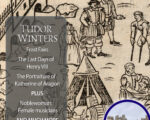
What a wonderfully interesting magazine we have for you this cold winter month. Hopefully, you’re able to stay wrapped up warm while you enjoy the latest copy of Tudor Life Magazine
[Read More...]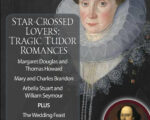
Tragic Tudor romances are always fascinating to learn about, and we’ve dedicated this months magazine to this topic. Romeo and Juliet always come to mind when you mention star crossed lovers but there are so many more real-life couples to learn about.
[Read More...]
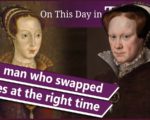
On this day in history, 24th December 1604, Christmas Eve, Sir Thomas Cornwallis, Comptroller of the household of Mary I and member of Parliament, died at about the age of eighty-six.
Cornwallis had been active putting down rebellion in 1549 and during the succession crisis of July 1553 swapped sides at just the right time, recanting his proclamation for Jane as queen and proclaiming for Mary instead, He was rewarded for this when Mary came to the throne.
Of course, he wasn’t so much a favourite in the reign of Elizabeth I, but a friendship with a man close to Elizabeth may have helped him escape trouble.
Find out more about Sir Thomas Cornwallis in today’s talk.
[Read More...]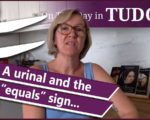
Yes, you read that title right! On this day in Tudor history, 18th June 1558, the will of Welsh mathematician, physician and mint administrator Robert Recorde was proved.
Recorde invented the “=” sign and wrote books on mathematics and also a urological treatise “The Urinal of Physick”.
Let me tell you all about this man and his works, which have such catchy titles!
[Read More...]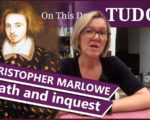
On this day in Tudor history, 1st June 1593, the inquest into the death of playwright, poet and translator Christopher Marlowe took place.
Twenty-nine-year-old Marlowe, writer of such famous works as “Tamburlaine”, “Dr Faustus” and “The Jew of Malta”, had been fatally stabbed at a house in Deptford Strand, London, by a man named Ingram Frizer on 30th May 1593, but what happened?
In today’s “on this day” talk, I share William Danby’s coroner’s report on what happened that fateful day.
[Read More...]
On this day in Tudor history, 23rd May 1554, Elizabeth, daughter of King Henry VIII and his second wife, Anne Boleyn, arrived at the Palace of Woodstock in Oxfordshire, where she was placed under house arrest.
Elizabeth remained under house arrest there for just under a year, and she didn’t make it easy for her gaoler, Sir Henry Bedingfield, and neither did her servants.
Find out why Elizabeth was under house arrest and what happened in today’s talk.
[Read More...]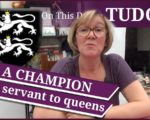
On this day in Tudor history, 15th April 1545, Sir Robert Dymoke, champion at the coronations of Henry VII and Henry VIII, and a man who served in the households of Queens Catherine of Aragon and Anne Boleyn, died.
He had an interesting career and survived being suspected of involvement in the 1536 Pilgrimage of Grace rebellion.
Find out more about Sir Robert Dymoke, champion at the coronations of three kings, in today’s talk.
[Read More...]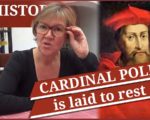
On this day in Tudor history, 15th December 1558, Cardinal Reginald Pole, Mary I’s Archbishop of Canterbury and her chief advisor, was buried at Canterbury Cathedral. Coincidentally, Cardinal Pole had died the same day as his queen, on 17th November 1558.
Find out a bit more about Cardinal Pole, his background, death and burial, in today’s talk.
[Read More...]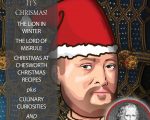
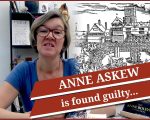
On this day in Tudor history, 18th June 1546, twenty-five-year-old Anne Askew was found guilty of heresy at London’s Guildhall along with Nicholas Shaxton (former Bishop of Salisbury), Nicholas White and John Hadlam.
Anne Askew has gone down in history as a Protestant martyr, after having been burned at the stake in July 1546, but also as a woman who was illegally put to the rack at the Tower of London by two of Henry VIII’s trusted men.
In today’s video, I use contemporary sources and Anne Askew’s own accounts, to piece together what happened that June and July, and what led to Anne Askew’s execution.
[Read More...]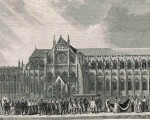
On this day in Tudor history, 1st June 1533, Whitsunday, Queen Anne Boleyn, Henry VIII’s second wife, was crowned queen at Westminster Abbey in a ceremony performed by her good friend, Thomas Cranmer, Archbishop of Canterbury.
It was a long day for the pregnant queen, starting with a procession from Westminster Hall to Westminster Abbey, then there was the actual coronation, where Anne was crowned with St Edward’s crown, and finally the huge coronation banquet.
Find out exactly what Anne Boleyn did on that day in 1533 in today’s video.
[Read More...]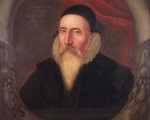
On this day in Tudor history, 26th March 1609, John Dee, astrologer, mathematician, alchemist, antiquary, spy, philosopher, geographer and adviser to Elizabeth I, died.
John Dee was a fascinating Tudor man and someone who narrowly missed getting into big trouble for his hobbies. Alchemy, talking with angels, mathematics… what wasn’t he into?
[Read More...]
In today’s “on this day in Tudor history”, I take us back to the reign of Queen Mary I.
On 12 February 1554, Lady Jane Grey, formerly Queen Jane, and her husband Guildford Dudley were executed. Guildford was beheaded on Tower Hill and Jane was beheaded at the Tower of London. I explain what led to their executions and relates what happened at them.
[Read More...]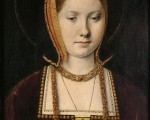
10th December:
1541 – Thomas Culpeper, Gentleman of the Privy Chamber, and Francis Dereham, a member of Queen Catherine Howard’s household, were executed at Tyburn. Culpeper and Dereham were tried on 1st December 1541 at the Guildhall, and convicted of treason. Both were executed on 10th December 1541, but Culpeper was beheaded while Dereham had to face the brutal traitor’s death of being hanged, drawn and quartered. Culpeper was buried at St Sepulchre-without-Newgate (Holborn).
1591 – Executions of Edmund Gennings, Roman Catholic priest, and Swithin Wells, Roman Catholic, on a scaffold set up outside Wells’ house at Holborn. They were hanged, drawn and quartered for treason due to their Catholic faith and for celebrating the mass.
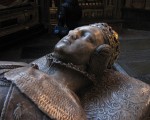
Frances (née Brandon) was the eldest daughter of Charles Brandon, Duke of Suffolk, and his third wife, Mary Tudor, sister of Henry VIII and widow of Louis XII of France. It is worth examining Frances’s parents and their significance within Tudor society before moving onto her life. Her father was an extraordinary character: magnate, courtier, and soldier, he exemplified the ideal qualities associated with being a male sixteenth-century courtier. Having been a close confidant to Henry VIII throughout his childhood, Suffolk found military fame in 1512 as a result of his involvement with the Anglo-French war. This war led to a successful siege of the French town of Tournai, with the inhabitants essentially forced to surrender to the invasion of the English king. As a result, Henry passed the keys of the city to Suffolk as a result of his honour and bravery.
[Read More...]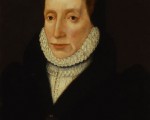
18th June:
1529 – Opening of the Legatine Court at Blackfriars to hear the case for the proposed annulment of Henry VIII’s marriage to Catherine of Aragon.
1546 – Anne Askew was arraigned at London’s Guildhall for heresy, along with Nicholas Shaxton, Nicholas White and John Hadlam (Adlams or Adams). She was sentenced to be burned at the stake.
1558 – Proving of the will of Robert Recorde, Welsh mathematician and physician. His date of death is not known, but is thought to have been mid June 1558. He is known for introducing the “equal to” sign, i.e. “=”. He published several mathematical works.
1588 – Death of Robert Crowley, Protestant printer, author, poet and Church of England clergyman. He was buried in the chancel of St Giles Cripplegate under the same stone as his great friend martyrologist, John Foxe.
1592 – Death of Francis Wyndham, Judge, at the Committee House, St Peter Mancroft, Norwich. His trials included the treason trials of John Somerville and William Parry in the 1580s, and his legal knowledge led to him being approached for advice on Mary, Queen of Scots.
1616 – Death of Thomas Bilson, Bishop of Winchester, at Westminster. He was buried at Westminster Abbey.

28th May:
1509 – Death of Edward Courtenay, 1st Earl of Devon. He was buried at Tiverton.
1533 – Archbishop Thomas Cranmer proclaimed the validity of Henry’s marriage to Anne Boleyn.
1535 – Birth of Sir Thomas North, translator, in London.
1582 – Executions of Roman Catholic priests Thomas Forde, John Shert and Robert Johnson at Tyburn. They were hanged, drawn and quartered.
1611 – Funeral of Thomas Sutton, founder of the London Charterhouse.
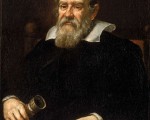
12th February:
1554 – Executions of Lady Jane Grey and her husband Lord Guildford Dudley for treason. They were buried in the Chapel of St Peter ad Vincula at the Tower of London.
1567 – Death of Sir Thomas White, founder of St John’s College, Oxford, and former Lord Mayor of London, at his property in Size Lane, London. He was buried in St John’s College Chapel.
1584 – Executions of five Catholic priests, including James Fenn. They were hanged, drawn and quartered at Tyburn. Fenn was beatified by Pope Pius XI in 1929.
1590 – Death of Blanche Parry, chief Gentlewoman of the Privy Chamber, at the age of eighty-two. She was buried in St Margaret’s, Westminster, with funeral rites which were usually reserved for a baroness. She has a monument in St Margaret’s and also one in Bacton Church, her home village in Herefordshire, which bears an inscription of twenty-eight lines of verse recording Blanche’s service to her beloved Queen.
1611 – Probable date of death of Sir Henry Lee, Queen’s Champion from c.1580 to November 1590. He was buried at Quarrendon in Buckinghamshire.

Here is the full version of our 86-page January edition of Tudor Life Magazine. This month we have many articles about this fascinating king – all the way through to his final days.
[Read More...]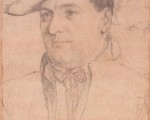
11th December:
1577 – Burial of Benjamin Gonson, Treasurer of the Navy and son of William Gonson, Vice-Admiral of Norfolk and Suffolk from 1536 until 1543. Gonson was buried at St Dunstan’s Church.
1589 – Death of Patrick Lindsay, 6th Lord Lindsay of the Byres, at Struthers Castle in Fife, Scotland. Lindsay was a supporter of the Protestant Reformation, and one of the lords of the congregation. He was one of Mary, Queen of Scots’ guardians when she was imprisoned at Lochleven and was a Privy Councillor after she was deposed as queen.
1607 – Death of Roger Manners, member of Parliament and Constable of Nottingham Castle. He was buried at Uffington Church in Rutland.
1608 – Burial of Douglas Sheffield (née Howard), Lady Sheffield, at St Margaret’s Church, Westminster. Douglas was the eldest daughter of William Howard, 1st Baron Howard of Effingham, and the wife of John Sheffield, 2nd Baron Sheffield. Before her marriage, she served as a Maid of Honour to Elizabeth I. After her husband’s death, she had an affair with Robert Dudley, 1st Earl of Leicester, which resulted in the birth of a son, Sir Robert Dudley, the explorer and cartographer, born in 1574. Douglas claimed that she and Dudley had married in secret when she was pregnant in late 1573, but she could not provide any evidence to support this when her son sought to claim his father’s and uncle’s titles after Elizabeth I’s death. Douglas went on to marry Sir Edward Stafford in 1579.
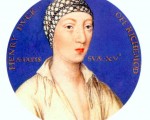
On this day in history…
12th June:
1492 – Burial of Elizabeth Woodville, former consort of Edward IV, next to her husband in St George’s Chapel, Windsor Castle.
1511 – Burial of William Courtenay, 1st Earl of Devon, at Blackfriars.
1530 – Catherine of Aragon told Henry VIII to abandon his “wicked” life.
1535 – Richard Rich interviewed Sir Thomas More in the Tower of London. He later reported, at More’s trial, that More had denied the royal supremacy during this interview.
1540 – The newly imprisoned Thomas Cromwell wrote to King Henry VIII from the Tower of London, asking for mercy and pleading his innocence.
1553 – Edward VI’s council commanded the judges of the King’s Bench to turn Edward’s “Devise for the succession” into a legal will.
1567 – Death of Richard Rich, 1st Baron Rich and Lord Chancellor, at Rochford. He was buried at Felstead. Richard Rich was Lord Chancellor in Edward VI’s reign and went on to serve in Mary I’s Privy Council.
1573 – Birth of Robert Radcliffe, 5th Earl of Sussex, courtier and soldier. He was the son of Henry Radcliffe, 4th Earl of Sussex, and his wife, Honor. Radcliffe served Elizabeth I as an ambassador and as Earl Marshal and Colonel General of her army. He was appointed Lord Lieutenant of Essex by James I in 1603.
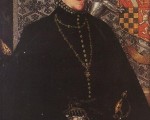
On this day in history…
29th May:
1500 – Death of Thomas Rotherham, Archbishop of York, at Cawood Castle, Yorkshire. He was buried in York Minster.
1533 – Anne Boleyn’s coronation pageantry began with a river procession.
1542 – Death of Sir Thomas Neville, lawyer and Speaker of the House of Commons, county commissioner in Kent, Surrey, Sussex, and Middlesex, and Knight of St John. He was the fifth son of George Neville, 2nd Baron Bergavenny. Neville was buried in Mereworth church in Kent.
1546 – Murder of David Beaton, Cardinal and Archbishop of St Andrews, at the castle in St Andrews. He was killed by a small group of Fife lairds. One motive was their outrage at the recent trial and execution of Protestant preacher George Wishart at St Andrews.
1555 – Birth of George Carew, Earl of Totnes, soldier, administrator and Lord President of Munster. He was a member of James I’s Privy Council and his council of war. He was also a friend of Sir Walter Ralegh, and pleaded unsuccessfully for his life.
1593 – Hanging of religious controversialist John Penry at St Thomas-a-Watering in Surrey. Penry had been found guilty of “publishing scandalous writings against the church” after having been linked to the “Marprelate religious tracts.”
1623 – Burial of Francis Anthony, alchemist and physician, in the church of St Bartholomew-the-Great.
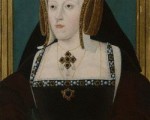
Katherine of Aragon was born into the royal Spanish household on 16th December 1485, at the Archbishop’s Palace of Alcalá de Henares. She was the daughter of King Ferdinand II of Aragon and his illustrious wife, Isabella I of Castile. Katherine’s parents were the Catholic powerhouses of Western Europe during the late fifteenth century, therefore during her youth, the young Spanish princess would have envisioned the grand future that awaited her, with an ambitious marriage into an equally powerful European royal household.
At aged just three, her parents were in negotiations with the English king, Henry VII, for a suitable marriage to his son, Arthur. The Tudors had recently taken the throne after defeating the Yorkist Richard III at Bosworth in 1485, although their Lancastrian claimant to the throne was still vulnerable to usurpation. England required international support to ensure the legitimacy and security of their house. An Anglo-Spanish alliance would be vitally important for the country’s prosperity and position in European politics.
[Read More...]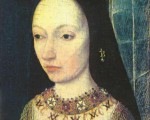
Thank you to Heather R. Darsie, our regular contributor, for writing this article on Margaret of York (1446-1503).
On 3 May 1446, Margaret of York, younger sister of the future Edward IV, was born. The fifth of seven children and the youngest daughter of Richard of York, 3rd Duke of York, and his wife, Cecily Neville, Margaret of York began her life at Fotheringhay Castle, Northamptonshire. Her youngest sibling and the youngest of the seven children, the future Richard III of England, was born at the same castle in 1452. Margaret lived an uneventful life until she was about nineteen years old, when the opportunity to become Duchess of Burgundy presented itself.
[Read More...]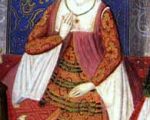
Thank you to regular contributor Heather R. Darsie for writing this introduction to the women of the House of Trastámara.
When thinking about the important players of the Renaissance, particularly during the reign of Henry VIII of England, one recalls the powerful families of the English Tudors, French Valois, and Burgundian Habsburgs. The family that is even more influential, even if quietly, is the overlooked Trastámaras of Spain. This family married into the Tudor, Valois, and Habsburg families, among others, and its reach was far. Who were they?
[Read More...]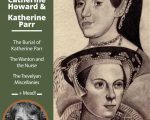
The full edition of our 68-page April edition of Tudor Life Magazine. The theme this month is two of Henry VIII’s fascinating wives, Catherine Howard & Katherine Parr
[Read More...]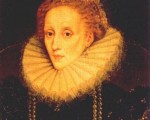
On this day in history, the 24th March 1603, Queen Elizabeth I died at Richmond Palace aged 69, bringing the rule of the Tudor dynasty to an end. Elizabeth I had reigned for 44 years and 127 days and her reign was known as “The Golden Age”. She was the longest reigning Tudor monarch.
It is said that the execution of her former favourite, Robert Devereux, the Earl of Essex, on the 25th February 1601 had a huge impact on Elizabeth. She had already lost her great love Robert Dudley in 1588, her good friend Blanche Parry in 1590, and her friend and adviser William Cecil, Lord Burghley, in 1598. It seemed that all those she loved and depended on were dying and leaving her. Her grief, combined with a belief that she was losing her grip on her court and country, led to her becoming severely depressed.
[Read More...]